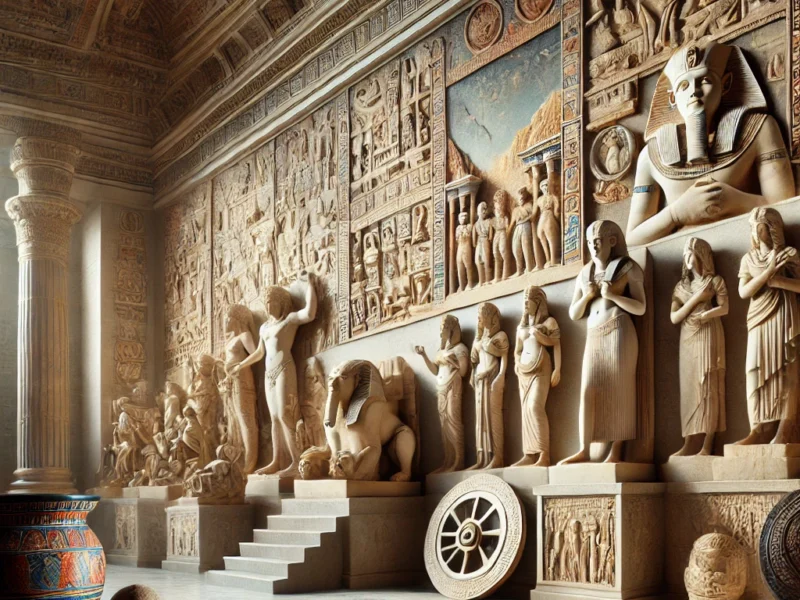Argentina, a country known for its vibrant landscapes and passionate people, boasts a rich cultural heritage that reflects a blend of indigenous, European, and modern influences. Understanding Argentina’s cultural traditions offers insights into its unique identity, which is shaped by its history, diverse immigrant communities, and strong national pride.
In this article, we will explore some of the most fascinating traditions in Argentina, from dance and music to food and celebrations, while also highlighting cultural links to broader practices seen in other parts of the world, such as those found in Cultural Resource Management and United State Culture and Traditions.
1. Tango: The Soul of Argentina:
Tango is undeniably one of the most iconic symbols of Argentine culture. Originating in the late 19th century in the working-class neighborhoods of Buenos Aires, tango was influenced by African, European, and indigenous rhythms. This passionate dance, accompanied by hauntingly beautiful music, became a symbol of Argentine identity, spreading across the globe.
Although tango started as a dance of the poor, it has evolved into an elegant art form performed in prestigious venues around the world. Visitors to Argentina can experience tango in its most authentic form by visiting local milongas (tango dance halls) in Buenos Aires, where the spirit of the dance still thrives.
2. Traditional Argentine Cuisine:
Food plays an essential role in Argentina’s cultural traditions, with its cuisine influenced by the country’s Spanish, Italian, and indigenous roots. The asado (barbecue) is central to Argentine culinary culture. Hosting an asado is a social event, where families and friends gather to enjoy slow-cooked meats, primarily beef, which is a national staple.
The focus on beef is tied to Argentina’s history as one of the world’s leading cattle-producing countries, and the art of grilling meats is a source of pride for many Argentinians. Traditional dishes like empanadas (savory pastries filled with meat or cheese) and mate (a herbal drink consumed in a communal setting) are also staples that reflect the social and communal nature of Argentine dining.
3. Festivals and Celebrations:
Argentina’s festivals provide a window into its vibrant culture. One of the most important national holidays is Carnaval, celebrated in February, which mirrors the festival traditions seen in other Latin American countries but has its own unique Argentine flair. In the northern provinces, the Pachamama festival is an important celebration, paying homage to the Andean goddess of the earth, where traditional indigenous rituals are still practiced today.
Another notable celebration is Día de la Tradición (Day of Tradition), held annually on November 10th, which honors Argentine folklore, gaucho traditions, and national customs. It’s a day filled with traditional music, food, and dance, showcasing the pride Argentinians have for their cultural heritage.
4. Gaucho Culture:
The gaucho, Argentina’s version of the cowboy, is a revered symbol of freedom and rugged individualism. Rooted in the country’s rural history, gauchos played a significant role in Argentina’s fight for independence and are celebrated in folklore, literature, and even in modern-day traditions. The gaucho lifestyle, which revolves around horseback riding, cattle ranching, and a deep connection to the land, is preserved through various cultural events and festivals throughout the country.
In modern Argentina, the gaucho continues to symbolize the national spirit of resilience and independence. While the gaucho lifestyle may have changed, the traditions are kept alive through performances, rodeos, and agricultural fairs.
5. Religion and Spirituality:
Argentina is predominantly Roman Catholic, and religious traditions are an integral part of its culture. While Christmas and Easter are widely celebrated, one of the most important religious events in Argentina is the feast day of the Virgin of Luján, the country’s patron saint. Every year, thousands of pilgrims visit the Basilica of Luján, located near Buenos Aires, to pay homage.
Religious festivals often blend European Catholic practices with local customs, creating a unique spiritual atmosphere. Additionally, indigenous spiritual practices, especially in the northern provinces, remain vital in the daily lives of many communities, contributing to the country’s diverse spiritual landscape.
6. The Influence of Immigrant Cultures:
Argentina’s cultural identity has been shaped by waves of immigration, particularly from Europe, during the late 19th and early 20th centuries. Spanish, Italian, German, and Jewish immigrants brought with them their customs, food, and traditions, which have been incorporated into Argentine life.
In the same way that cultural heritage plays a role in Cultural Resource Management, the preservation of these traditions is essential for understanding how Argentina has developed into the multicultural society it is today. Buenos Aires, in particular, reflects this rich tapestry of cultures, with its distinct neighborhoods like La Boca showcasing Italian influences and Once reflecting the traditions of the Jewish community.
Cultural Practices:
In exploring Argentine cultural traditions, it’s fascinating to see how they align and diverge from other global traditions. For example, the focus on preserving cultural practices and artifacts, as seen in Argentina, is a common theme in Cultural Resource Management, which emphasizes the safeguarding of cultural heritage for future generations. Similarly, the celebration of national identity and traditions is also a significant aspect of United State Culture and Traditions, where both countries emphasize the importance of their historical and cultural legacies in shaping modern national pride.
Conclusion:
Argentina’s cultural traditions are as diverse and dynamic as its landscape, from the tango rhythms in the bustling streets of Buenos Aires to the gaucho spirit that thrives in the Pampas. The country’s traditions reflect a blend of indigenous, European, and modern influences, making it a unique cultural destination. By interlinking its rich cultural past with contemporary practices, Argentina continues to evolve while preserving the essence of its national identity.
Whether you’re enjoying an asado, dancing the tango, or participating in a religious festival, Argentina offers a cultural experience that is both deeply rooted in history and wonderfully alive in the present. Understanding and appreciating these traditions allows us to grasp the heart and soul of this remarkable country.



